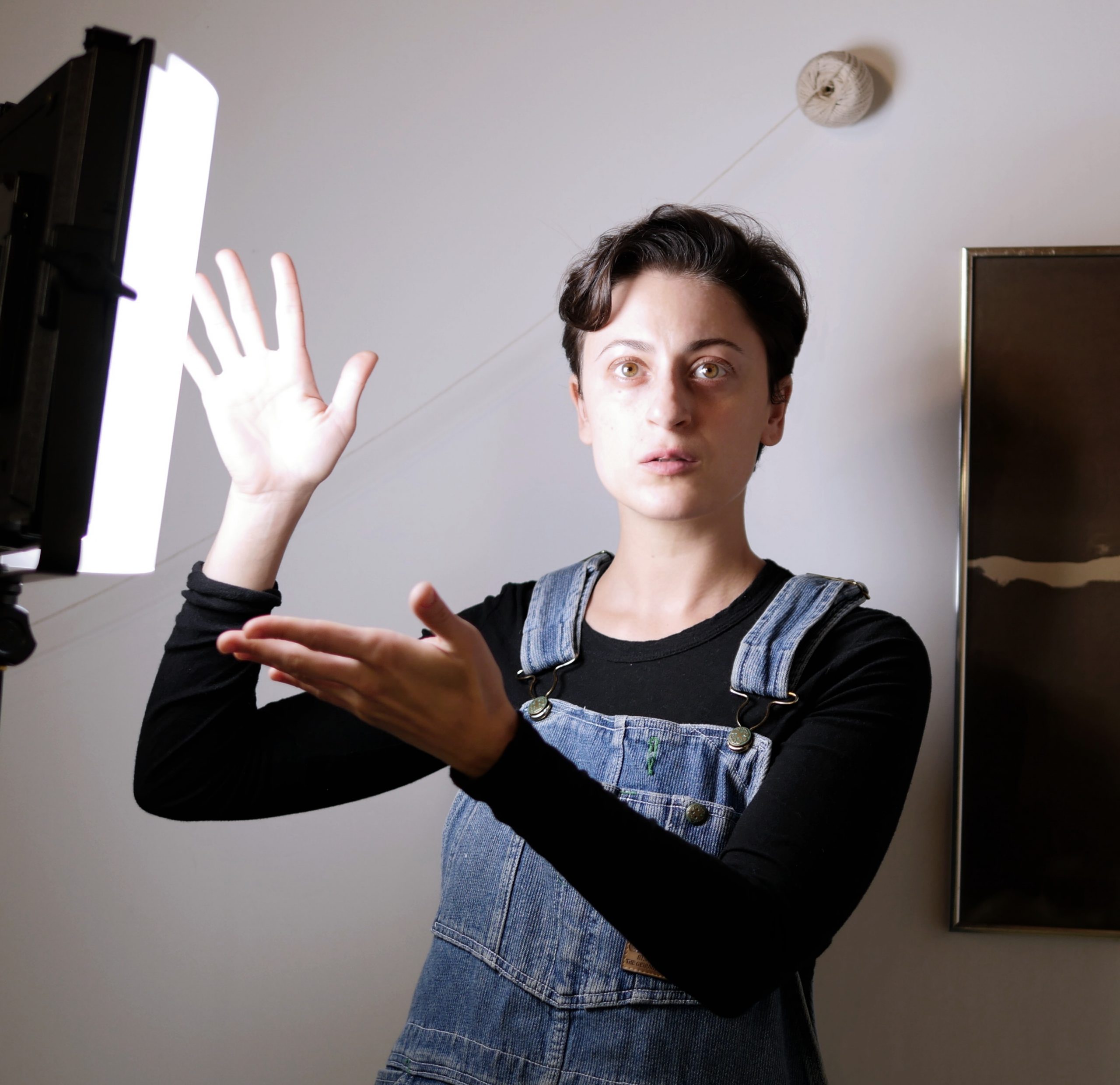We are delighted to welcome George William Price of Video Data Bank to write for us. In his essay, Price reflects on the work of this week’s Conversations at the Edge artist, Sara Magenheimer.

I am delighted to welcome interdisciplinary artist Sara Magenheimer to Conversations at the Edge this week as part of Video Data Bank’s (VDB) 40th Anniversary Celebrations!
This Fall 2016 VDB at the School of the Art Institute of Chicago (SAIC) celebrates forty years of fostering awareness and scholarship of video and media art. From VDB’s humble beginnings in a small closest at the back of SAIC’s library, to becoming one of the world’s leading resources for video by and about contemporary artists, VDB has pioneered far-reaching support for moving image artists, advocating for this most democratic and widely distributed of art forms.
Over its forty-year history VDB has grown to include the work of more than 600 artists and 6,000 video art titles. These titles describe the development of video as an art form from the late 1960s to the present day. During that time VDB has proudly supported countless emerging and established artists, including Sara Mageheimer who we have had the delight of collaborating with since 2015.
Sara’s work is dense, complex, and multifaceted—from sculpture to performance, text and sound—she navigates these intersections and challenges our limited realms of perception. Works such as Slow Zoom Long Pause (2015) and The Rhythm of Plain White (2014) present the viewer vast amounts of information in fragments and glimpses, mediating the tactual depth of sight, sound, and sense. Both videos play with language as if it were a physical form, layering digital voices, birdsong, and white noise like sediment settles over millennia. We the viewer are immersed in the moving image—an active participant—surrounded by shifting temporal planes and swirling disembodied voices.
This kind of immersive video practice is directly tied to Sara’s involvement in a performance-driven collaborations with both her peers and her audience. These collaborations include producing an immersive soundtrack for a recent exhibition of painter Amy Sillman’s work and inviting audience members to input words into a web-based “mad lib” political acceptance speech, which they could perform from a teleprompter to a live audience of friends, strangers, and museum visitors. Touching on Marshal McLuhan’s observations of a return to a pre-literate age through total sensory immersion, Sara and her collaborative projects endeavor to envelop the audience in a seamless web of tactile sound and unexpected visuals. Just as with her videos, Sara moves her audience to not only consume spectacle but to actively participate in it through the pushing and pulling of the boundaries of language, both in its oral and written forms.

Best is Man’s Breath Quality (2016) most completely addresses this post-medium condition and the redefining of cinematic boundaries seen in Sara’s sophisticated body of work. As a menacing voice guides us through the video we are confronted by images and sounds that appear and disappear before us. From primates engaging with their reflected selves to glowing jellyfish drifting through deep and dark oceans, our visual perception of the human figure is decentered, leaving only the grain of analog and digital voices recognizable to our senses.
Attempting to navigate between the fluent and articulate we are reminded of Rosalind Krauss’ argument that the post-medium condition is a plain where aesthetics and capital permeate all aspects of culture, from the highest-brow to the lowest form of pop culture. Sara’s videos are proposed sites of transformation and resistance—drawing on forbearers such Andy Warhol’s Exploding Plastic Inevitable or Nam June Paik’s Global Groove—pointing towards a dismantling of the mythology of America. She embraces the bastardized and hybridized nature of her practice through a masterful weaving of digital detritus, everyday objects, and the physical properties of sound.